The Python Break Statement is an important statement used to alter the flow of a program We would like to share two examples to display the working functionality of the Python Break statement in both For loop and While loop Loops are used to execute certain block of statements for n number of times until the test condition is false Python break, continue statement Last update on 1529 (UTC/GMT 8 hours) break statement The break statement is used to exit a for or a while loop The purpose of this statement is to end the execution of the loop (for or while) immediately and the program control goes to the statement after the last statement of the loop Browse other questions tagged python html flask jinja2 or ask your own question The Overflow Blog Podcast 354 Building for AR with Niantic Labs' augmented reality SDK
Break In Python A Step By Step Tutorial To Break Statement
Using break in python
Using break in python-But use of statements like break and continue are absolutely necessary these days and not considered as bad programming practice at all And also not that difficult to understand the control flow in use of break and continue In constructs like switch the break statement isIn this guide, we will discuss how you can use the break, continue, and pass statements when working with loops in Python 3 How to Use Break Statement The break statement lets you exit the loop in the presence of an external influence You will need to place this statement in the code of your loop statement
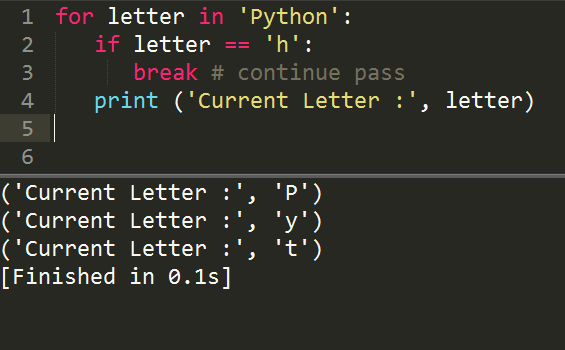



Geospatial Solutions Expert Python Break Continue And Pass Within Try Except Block
2 Break The break statement allows you to leave a for or while loop prematurely In the following example, the break statement is executed when a == 2 is satisfied It terminates the loop early The forloop control target (ie a in this case) keeps its current value when break is executed You can also exit a while loop early using break inIn python, break is used to terminate a loop(doesn't matter if it's a for loop or while loop) Now, most of the time(if not all of the time), you would use aYou'll walk through practical examples of how to use "break" and "continue" in Python when you're dealing with "while" loops You'll debug the example code,
Break Statement in Python The break statement is used inside the loop to exit out of the loop In Python, when a break statement is encountered inside a loop, the loop is immediately terminated, and the program control transfer to the next statement following the loop In simple words, A break keyword terminates the loop containing itThe break statement can be used with for or while loops Tip The continue statement is also used in loops to omit the current iteration only Learn more about the continue statement See the next section for the examples of using break Python statement A break statement example with for loop A list of numbers is created in the example Same as of other programming languages, python also uses conditional Statements like ifelse, break, continue etc While writing program(s), we almost always need the ability to check the condition and then change the course of program, the simplest way to do so is using if statement Code x = 10 if x > 0 print ("x is positive")
Python's builtin break statement allows you to exit a loop when a condition is met The continue statement allows you to skip part of a loop when a condition is met In this guide, we're going to discuss how to use the Python break and continue statements Loop Refresher Programmers use loops to automate and repeat similar tasks Extract the file, dir, extension name from a path string in Python;Example of Python break statement in for loop Following example will do the same exact thing as above program but using a for loop #declaring a tuple num = (1,2,3,4,5,6,7,8) count = 0 for item in num print (item) count = count1 if count == 4 break print ('End of program') Output This will generate following output




Python Break Statement 3 Examples With For And While Loops
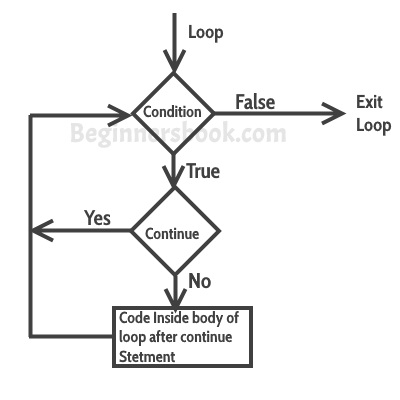



Python Continue Statement
The break statement is used to exit the current loop (while and for loops) The scope of break statement is only the current loop See the following example, where a variable x is initiated with the value of 10 The value in each iteration is incremented by 10It's probably too similar to break (both are a type of controlled goto, where continue returns to the top of the loop instead of exiting it), but here's a way to use it while answer == 'Y' roll = get_a_roll() display_die(roll) if roll == first_roll print("You lost!") answer = 'N' continuePython 'break' outside loop So, here is my code for turn in range (4) print turn1 guess_row = int (raw_input ("Guess Row")) guess_col = int (raw_input ("Guess Col")) if guess_row == ship_row and guess_col == ship_col print "Congratulations!




Break Statement In Python Quick Glance To Break Statement In Python
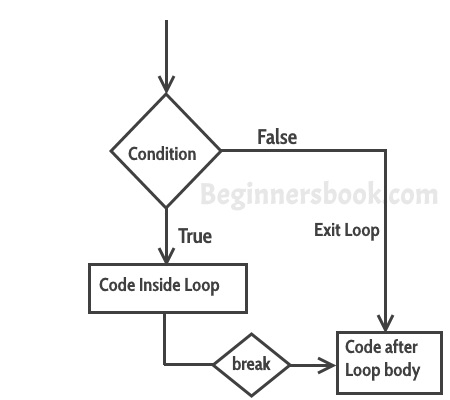



Python Break Statement
Convert a list of strings and a list of numbers to each other in Python; The break statement in Python terminates the current loop and resumes execution at the next statement, just like the traditional break found in C The most common use for break is when some external condition is triggered requiring a hasty exit from a loop The break statement can be used in both while and for loops 1 Python break statement The Python break statement breaks out of a loop Look at the example below Let's say you want to print a list of all the odd numbers but want the loop to stop as soon as the number goes above 10 In such a case, you can obviously specify a range, but the other option is to break out of the loop using the break




Python Insert New Line Into String




Python For Loops And If Statements Combined Data Science Tutorial
Python Tutorial to learn Python programming with examplesComplete Python Tutorial for Beginners Playlist https//wwwyoutubecom/watch?v=hEgO047GxaQ&t=0s&iBreak, continue, and return break and continue allow you to control the flow of your loops They're a concept that beginners to Python tend to misunderstand, so pay careful attentionThe break keyword is used to break out a for loop, or a while loop




Geospatial Solutions Expert Python Break Continue And Pass Within Try Except Block




Introduction To Computing Using Python More Looping Structures
Break Python break is used to get an early exit from the loop (be it for loop or while loop) Consider a scenario, where you want to execute a loop from beginning till the end but at the same time, you also want the loop to terminate upon meeting certain criteria inSplit strings in Python (delimiter, line break, regex, etc) Python break statement The break statement takes care of terminating the loop in which it is used If the break statement is used inside nested loops, the current loop is terminated, and the flow will continue with the code followed that comes after the loop The flow chart for the break statement is as follows



1




Java Break Javatpoint
Example 1 Python break for loop list = 1,2,3,4 count = 1;Introduction to the Python break statement Sometimes, you wan to terminate a for loop or a while loop prematurely regardless of the results of the conditional tests In these cases, you can use the break statementThe breakpoint () function calls another method in the sys module, called sysbreakpointhook (), which does the entry into the pdb session The signature of the method is breakpoint (*args, **kwargs) The positional and keyword arguments are passed to sysbreakpointhook (), which may raise a TypeError, if the signatures do not match




Python Programming Tutorial 08 Using Break And Continue Statements In While Loops Youtube




Python While Loop 5 Examples With Break Continue And Else Clause
Using Break and Continue Statements in Python" This article is part of in the series Published Tuesday 16 th August 16 In Python, break statements are used to exit (or "break) a conditional loop that uses "for" or "while" After the loop ends, the code will pick up from the line immediately following the break statementThe break statement can be used in both while and for loops If you are using nested loops, the break statement stops the execution of the innermost loop and starts executing the next line of the code after the block Syntax The syntax for a break statement in Python is as follows − break Flow Diagram ExamplePython break statement It terminates the current loop and resumes execution at the next statement, just like the traditional break statement in C The most common use for break is when some external condition is triggered requiring a hasty exit from a loop The break statement can be used in both while and for loops
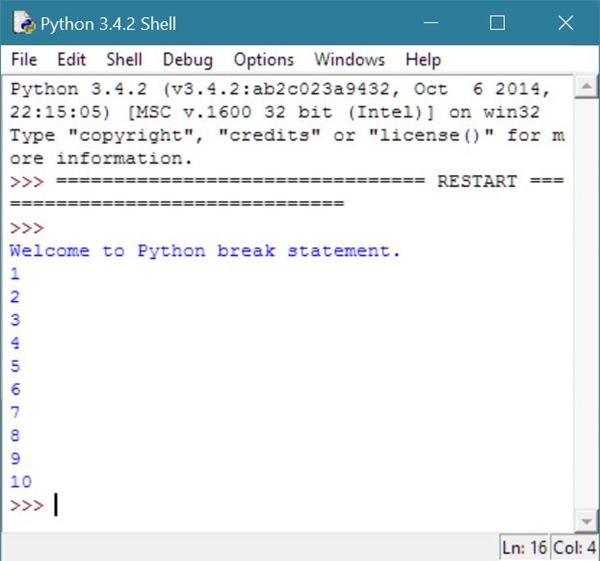



Python Break Statement




How To Use Break And Continue In Python While Loops Youtube
Break print ("found at",count,"location");Python break statement The break statement terminates the loop containing it Control of the program flows to the statement immediately after the body of the loop If the break statement is inside a nested loop (loop inside another loop), the break statement will terminate the innermost loop Syntax of break break Flowchart of breakPython Break statement Python break statement is used to break a loop, even before the loop condition becomes false In this tutorial, we shall see example programs to use break statement with different looping statements Syntax Following is the syntax of break statement break Run Just the break keyword in the line and nothing else



How To Break And Continue A Loop In Python Quora




Python Control Structures Ppt Download
Break statement in Python is used to bring the control out of the loop when some external condition is triggered Break statement is put inside the loop Continue is currently not supported in a finally in Python 37 (due to implementation issues) and the proposal is to not add support for it in Python 38 For return and break the proposal is to deprecate their use in Python 39, emit a compilation warning in Python 310 and then forbid their use after thatHence a BREAK statement is used in Python to break the While loop (or even FOR loop or any loop) Once the Python runtime encounters this BREAK statement, the control goes to the first statement after the Whileloop All the statements below the break statement and within the Whileblock are not executed (ignored)




Python Program To Print Prime Numbers Python Guides




Python Break Continue Pass Statements With Examples
Python For loops can also be used for a set of various other things (specifying the collection of elements we want to loop over) Breakpoint is used in For Loop to break or terminate the program at any particular point Continue statement will continue to print out the statement, and prints out the result as per the condition setUsing a break statement The break statement can be used for various purposes inside any loop in Python Some uses of break statements are shown in the following part of this tutorial using different examples Example1 Terminate the infinite loop based on random number The break Statement – Python Break Statement If we want to stop the looping process in between, based on some condition, then we have to use the break statement The break statement breaks the loop and takes control out of the loop In nested loop ( loop inside another loop ), if we use break statement in the inner loop, then control comes out of the inner loop only,




Build A Break Scheduler Using Python By Ayushi Rawat Analytics Vidhya Jun 21 Medium




Python While Loops Indefinite Iteration Real Python
Python break statement The break is a keyword in python which is used to bring the program control out of the loop The break statement breaks the loops one by one, ie, in the case of nested loops, it breaks the inner loop first and then proceeds to outer loops String split is used to break the string into chunks Python provides an inbuilt method called split () for string splitting We can access the split string by using list or Arrays String split is commonly used to extract a specific value or text from the given stringThe break statement in Python terminates the current loop and resumes execution at the next statement, just like the traditional break found in C The most common use for break is when some external condition is triggered requiring a hasty exit from a loop The break statement can be used in both while and for loops Example




Python Break Tutorialbrain



1
Python break Statement The break statement is used to terminate the loop when a certain condition is met We already learned in previous tutorials ( for loop and while loop) that a loop is used to iterate a set of statements repeatedly as long as the loop condition returns true The break statement is generally used inside a loop along with aConcatenate strings in Python ( operator, join, etc) Convert a string to a number (int, float) in Python; break Statement in Python In Python programming language, break statement is used to break ( terminate ) the for loop or while loop As soon as the break statement is executed the loop is ended and the conntrol will go to the statement immediately after the body of the loop




Python Break And Continue




C Break And Continue
You sunk my battleship!"In this video, you will learn how to use break and continue statements in Python In this video, you will learn how to use break and continue statements in PythonFor i in list if i == 4 print ("item matched") count = count 1;




Break Continue And Pass Statements Using For Loops In Python Scientifically Sound




Infinite Loops In Python Definition Examples Video Lesson Transcript Study Com
Break statement The break statement is used to terminate the loop or statement in which it is present After that, the control will pass to the statements that are present after the break statement, if available If the break statement is present in the nested loop, then it terminates only those loops which contains break statement




Python Program To Find Prime Number




Using Break And Continue Statements When Working With Loops In Go Digitalocean
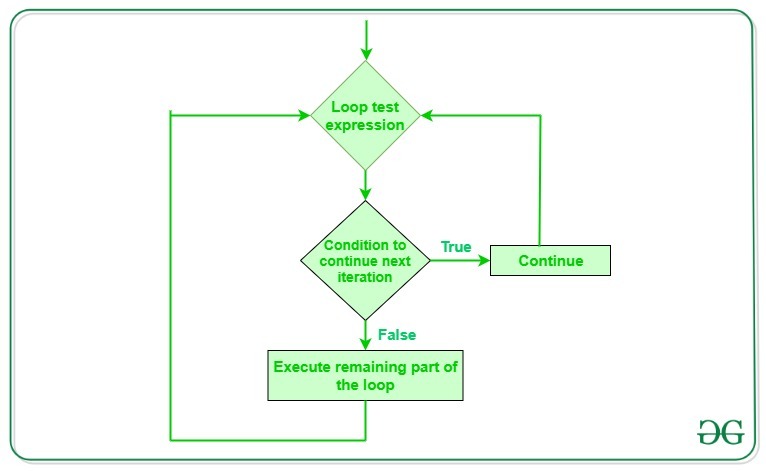



Difference Between Continue And Pass Statements In Python Geeksforgeeks




Python Unconditional Statements And String Operations




Python Break And Continue



Break In Python A Step By Step Tutorial To Break Statement




Using Break Condition In Python Experts Exchange
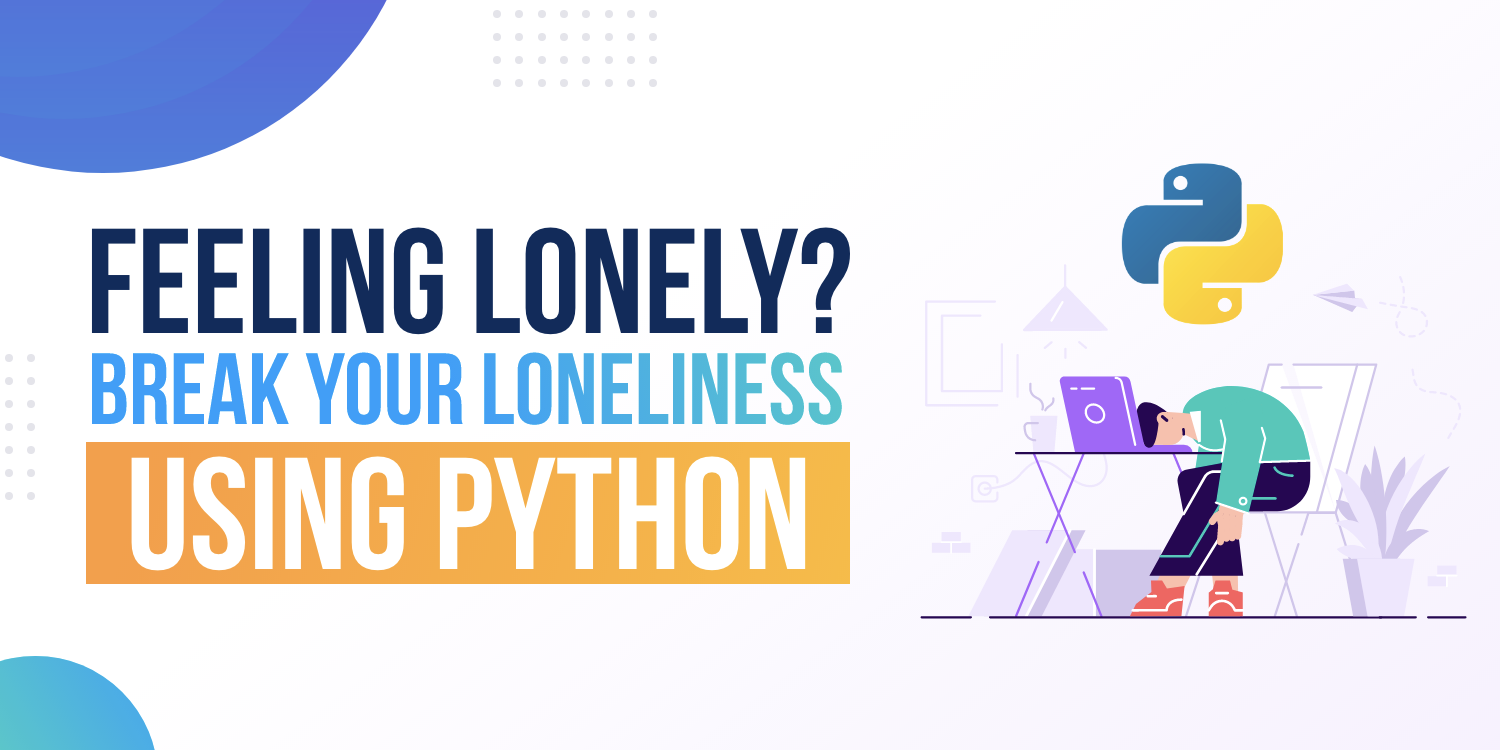



Feeling Lonely Break Your Loneliness Using Python By Jhankar Mahbub Programming Hero Medium




Solved In Python Without Using Break And Without Usin Chegg Com
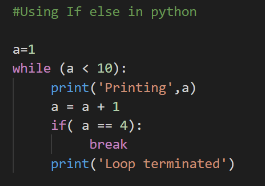



Python Infinite Loop Top 4 Types Of Statements In Python Infinite Loop




Python Break Statement Askpython
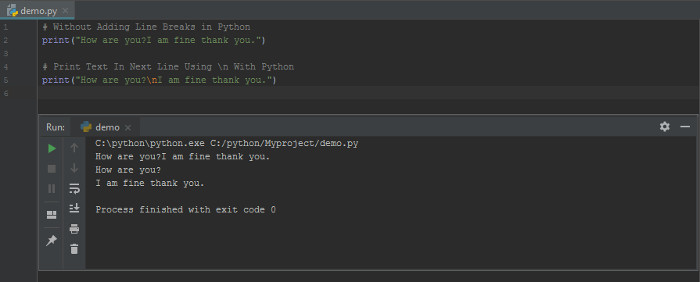



How To Print Text In Next Line Or New Using Python




Python Break Continue Pass Statements With Examples




Python Node Break Developers Dynamo
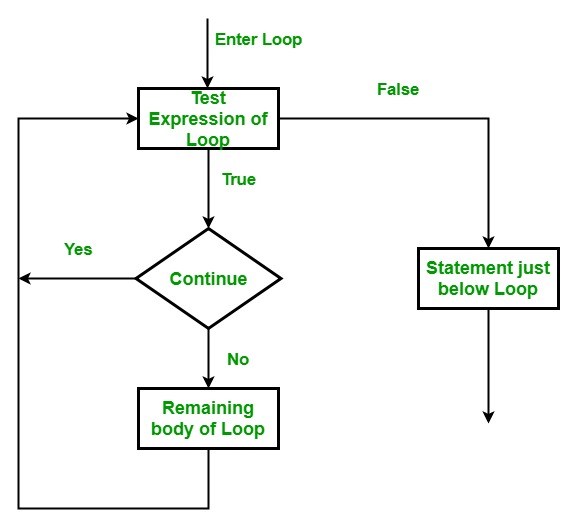



Break Continue And Pass In Python Geeksforgeeks




Build A Break Scheduler Using Python Dev Community




Lazy Automation Taking A Break Using Python Creativentechno
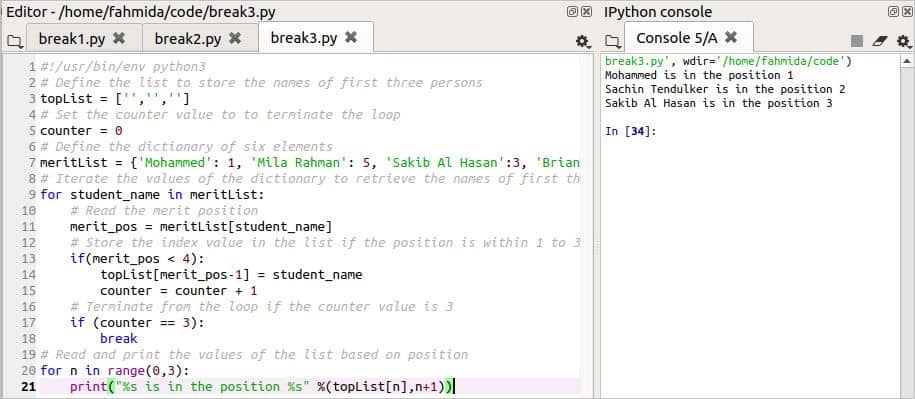



How To Use A Break And Continue Statement Within A Loop In Python Linux Hint




Loops In Python 3 Using Break Continue And Pass Statements




How To Break Lines Into Multiple Lines In Pyspark Stack Overflow




Python Break Statement Tutorialspoint




Introduction To Computing Using Python More Looping Structures



Python Tutorials Iterative Statements Repeatative Looping




How To Read From Stdin In Python Journaldev




Part 1 Debugging Python Code Pycharm



1




Python For Loops Definite Iteration Real Python




Python Break Statement Askpython




Debugging Both C Extensions And Python Code With Gdb And Pdb Download Scientific Diagram
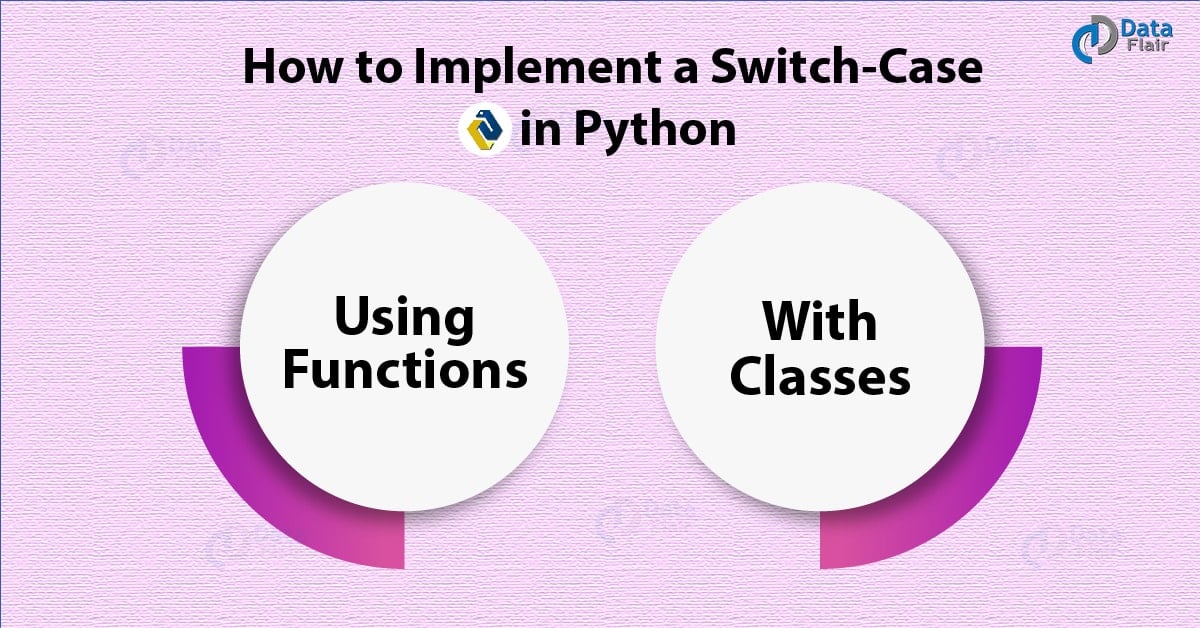



2 Simple Ways To Implement Python Switch Case Statement Dataflair




Python Tutorials For Beginners While Loop And Break Statement Youtube
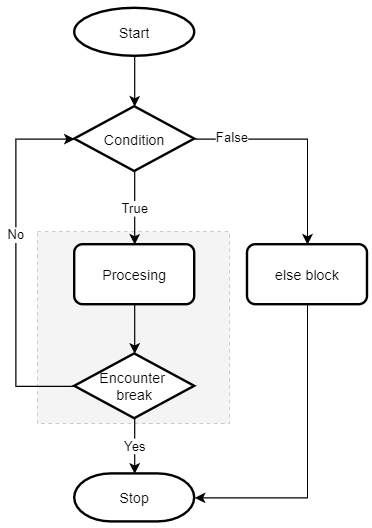



Python While Else Explained Clearly By Examples




Python Program To Print Prime Numbers From 1 To 100




Python Break And Continue With Easy Examples Journaldev




Python Flow Control




Amazon Com Code This Game Make Your Game Using Python Then Break Your Game To Create A New One Ebook Ray Meg Odd Dot Zoo Keith Kindle Store




Python Break Statement Askpython



Break In Python A Step By Step Tutorial To Break Statement




Python Break Continue Pass Statements With Examples




Code This Game Make Your Game Using Python Then Break Your Game To Create A New One Ray Meg Odd Dot Zoo Keith Amazon Com Books




Python Configuring While And For Loop Types Continue And Break Statements And Range Function Reviewed The Devnet Grind




How To Use A Break And Continue Statement Within A Loop In Python Linux Hint
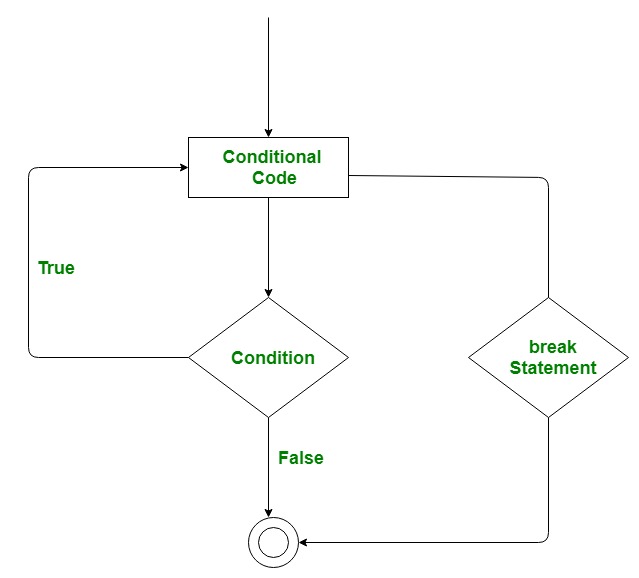



Break Continue And Pass In Python Geeksforgeeks




Needs To Be On Python 2 7 Hw 8 Continue Brea Chegg Com




Python Break Tutorialbrain




Python Break Continue Pass Statements With Examples




When A Line Of Codes Is Too Long How Do I Break Up The Line Without Stack Overflow




Python Break Statement 3 Examples With For And While Loops




How To Make A Reminder Application Using Python By Rajat Upadhyaya Jun 21 Python In Plain English




Python Break Statement Askpython




Python Break Statement




Python For Loops And If Statements Combined Data Science Tutorial




Python While Loops Indefinite Iteration Real Python



Break In Python A Step By Step Tutorial To Break Statement
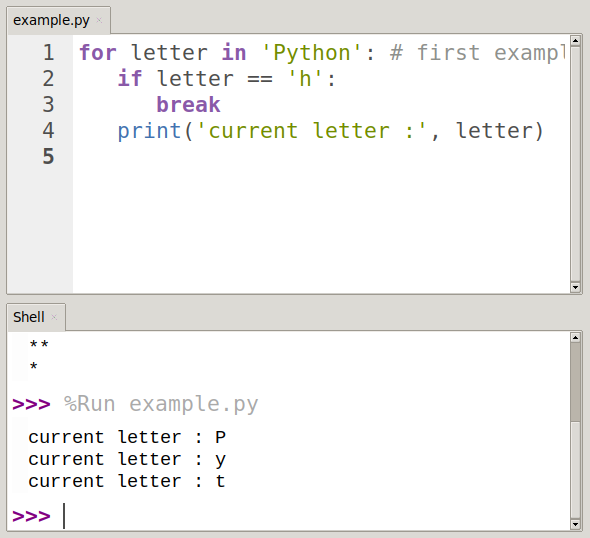



Python Break Statement Python Commandments Org




Python Break How To Use Break Statement In Python Python Pool
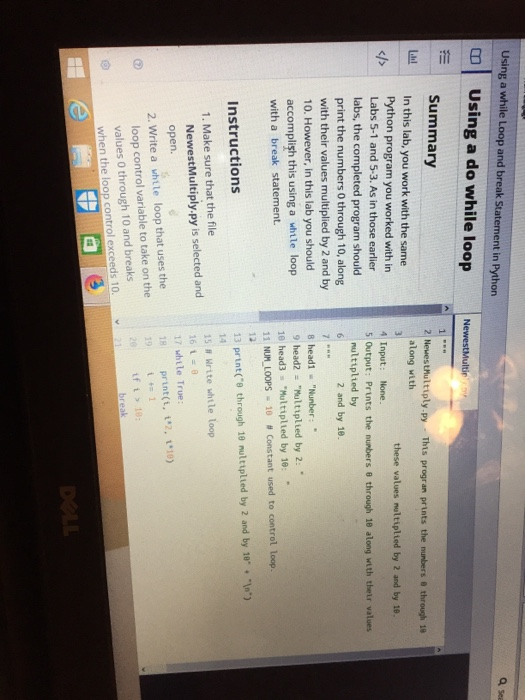



How I Set It Up In This Lab You Work Chegg Com




5 Loops Let S Learn Python And Pygame Ppt Download
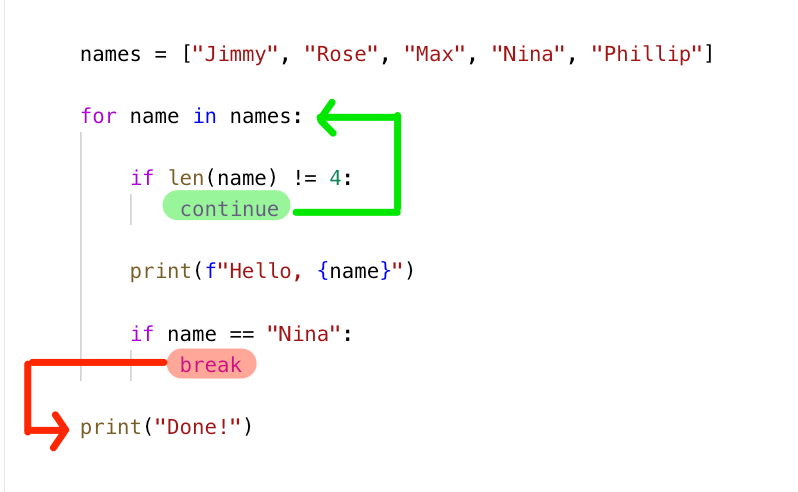



Break Continue And Return Learn Python By Nina Zakharenko




Python Break Continue Pass Statements With Examples



Q Tbn And9gcqtxruvzyl3rxwmhgsrvxdqlvjlnmrhv1q5ja0qcxpr8prxchef Usqp Cau




Python Loop Tutorial Python For Loop Nested For Loop Dataflair




Python Break And Continue
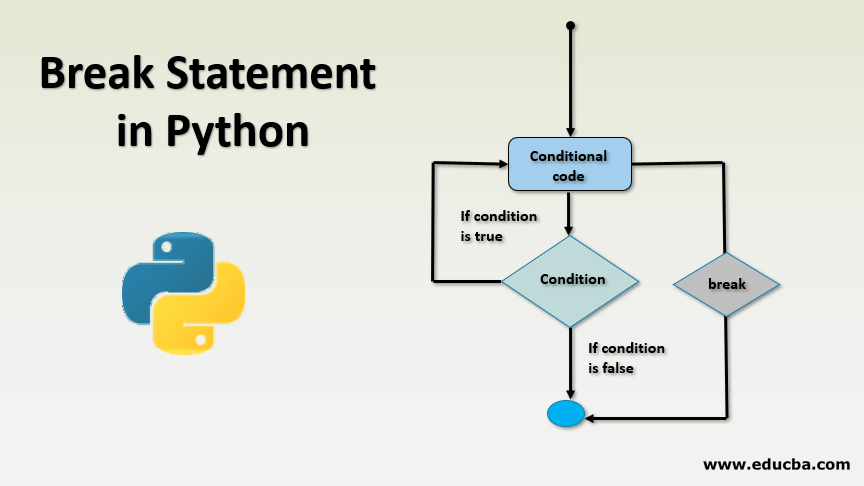



Break Statement In Python Quick Glance To Break Statement In Python



Python Tutorials Iterative Statements Repeatative Looping




Python While Loop Askpython
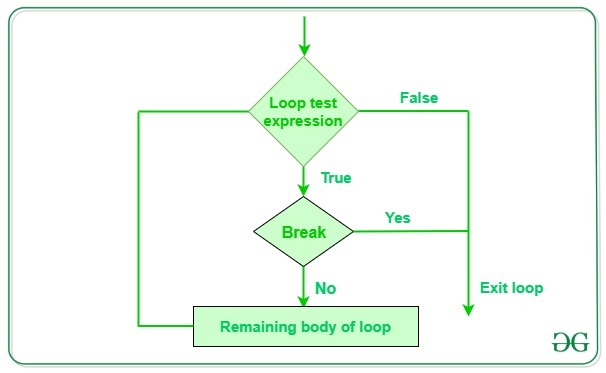



Python Break Statement Geeksforgeeks




Python Configuring While And For Loop Types Continue And Break Statements And Range Function Reviewed The Devnet Grind



Python While Loop Tutorial With Examples Trytoprogram




Python Switch Case Statement Using Classes And Dictionary



Python While Loop Tutorial With Examples Trytoprogram




Loops In Python 3 Using Break Continue And Pass Statements




Python While Loop Tutorial While True Syntax Examples And Infinite Loops




Chapter 5 Nested Loops Which Loop To Use



Break In Python A Step By Step Tutorial To Break Statement




How To Use A Break And Continue Statement Within A Loop In Python Linux Hint




Python Programming Tutorial 19 The Break Statement Youtube




Python While Loop Tutorial While True Syntax Examples And Infinite Loops



0 件のコメント:
コメントを投稿